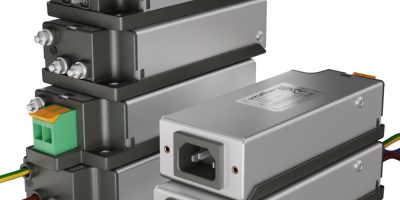Schaffner adds two more EMC filters for robotics and data centres
Two EMC filters have been added by Schaffner. The FN2520 and FN2660 join the initial FN2500 and FN2640 models.
The latest additions to the EMC filter range have been developed to meet the specific needs of the robotics and data centre markets.
These two applications, together with autonomous machines require power supplies to be mounted in 19 inch rack cabinets. To accommodate this, and provide systems builders with seamless integration, Schaffner has packaged the new EMC filter series in a space saving 1U rack-mount design.
Versatile connection options
The FN2520 and FN2660 EMC filters are available with a range of connection options, including on input and output include push-on terminals, cable glands, screw terminals or spring terminals for the new FN2520 and the existing FN2500 filters. The FN2640 and FN2660 offer IEC C14 (10 to 15A) or IEC C20 (16 to 20A) input connectors for direct mains connection and with a range of output connectors.
Key standard features include input voltage 250V AC at DC to 60Hz (277V AC / 400V DC in the case of the FN2500 filter), output current 10 to 20A at 40 degrees C, MTBF above 300,000 h and operating temperature range of -40 to +100 degrees C (with derating above 40 degrees C).
The FN2500 / FN2640 EMC filters meet the requirements of IEC 62368-1 – Audio/Video, Information and Communication Technology and equipment and IEC/EN 60335-1 – Household and similar appliances, Climatic Category 40/10 0/21 to IEC60068-1, Certified to UL 60939-3, IEC/EN 60939-3, GB/T 15287 and Protection category IP00 / IP20 for -103 terminals.
Data sheets are available to download. Sales representatives or partners can provide samples and quotations.
Schaffner specialises in electromagnetic compatibility and power quality components for an efficient and reliable use of electric energy. Schaffner Group’s products and services contribute to the promotion of technologies for the generation of renewable energies, ensures the reliable functioning of electronic devices and systems in compliance with all important quality and performance standards, and meets the requirements for increasing energy efficiency.




